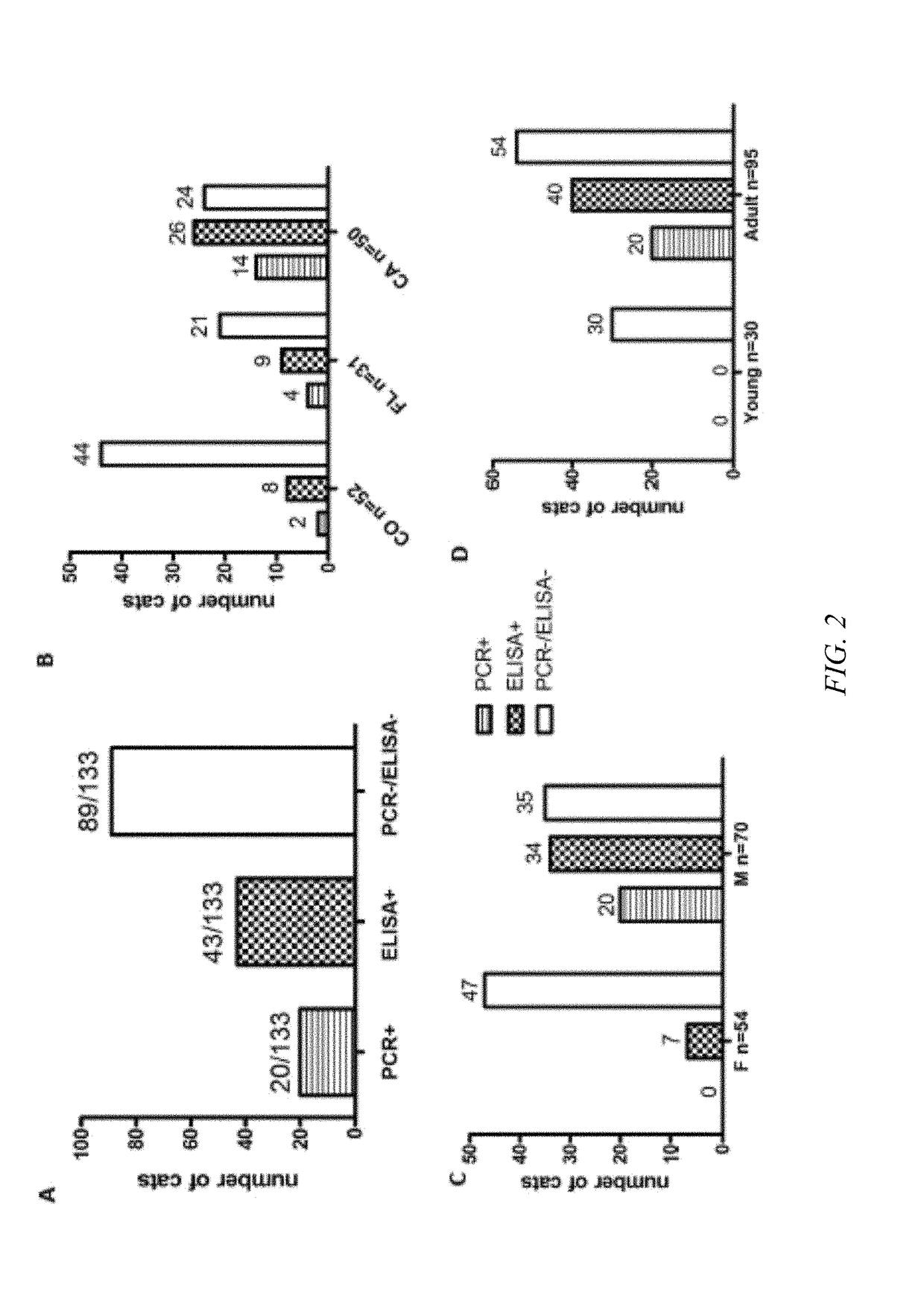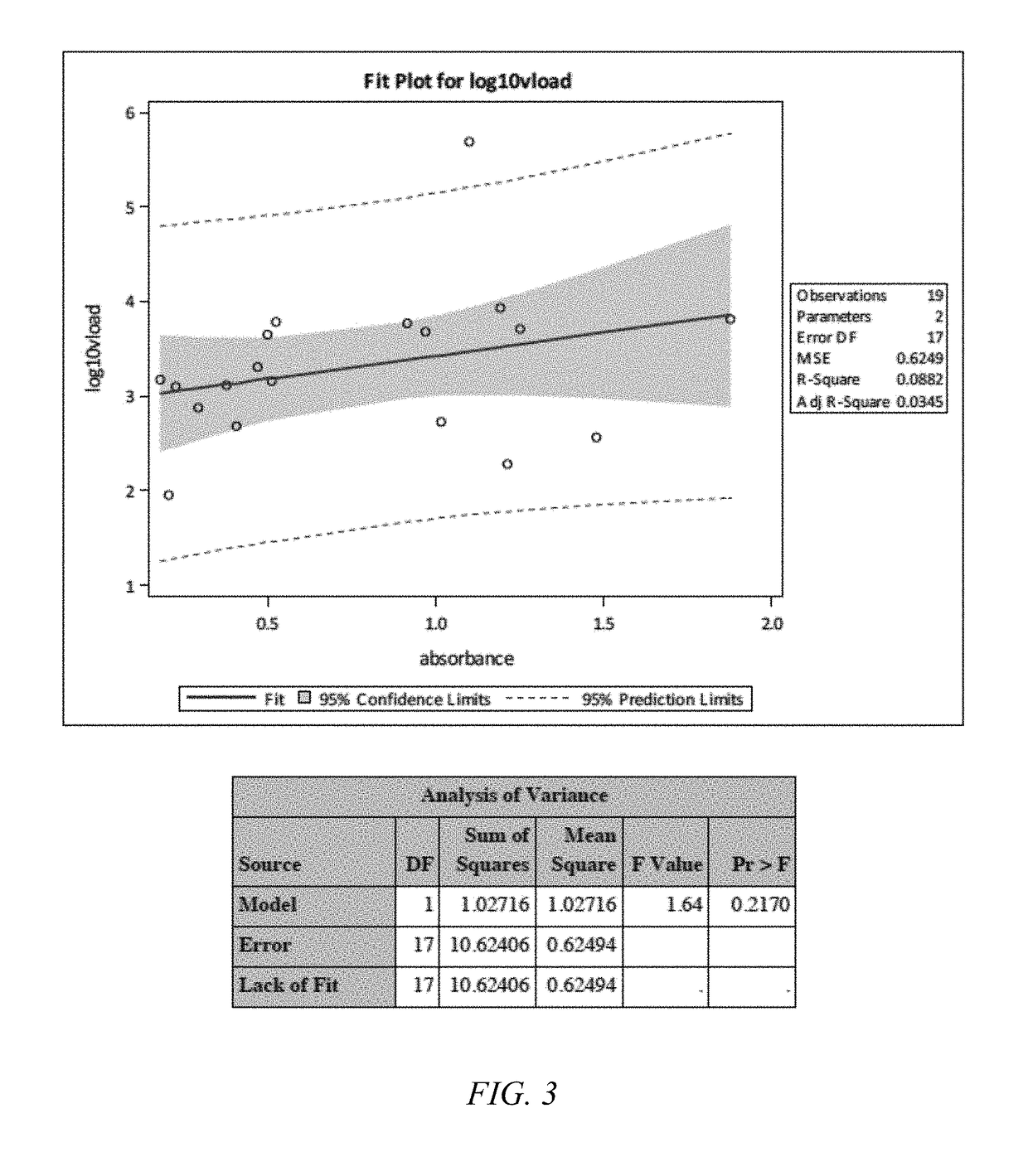Enzyme-linked immunoassay to detect felis catus gammaherpesvirus 1
a technology of enzyme-linked immunoassay and felis catus, which is applied in the field of serologic testing to detect exposure to felis catus gammaherpesvirus 1 , can solve the problems of serious difficulties in hiv patients and achieve the effect of usefulness
- Summary
- Abstract
- Description
- Claims
- Application Information
AI Technical Summary
Benefits of technology
Problems solved by technology
Method used
Image
Examples
example 1
Materials and Methods
[0031]Gene Selection for Identification of Immunodominant Antigens:
[0032]In a corollary study, our laboratory has obtained partial FcaGHV1 genome data to map FcaGHV-1 genes to other GHVs genes (unpublished data). We selected 7 conserved genes from this dataset to evaluate for potential to elicit humoral immunity in naturally infected cats. These included ORF38, ORF42, ORF59, ORF26, ORF52, ORF17.5, and ORF65 which code for proteins analogous to antigenic proteins of KSHV, EBV, and OvHV-2. All 7 proteins are virion-associated (Table 1).
TABLE 1FcaGHV1 protein analogs are antigenicin other gammaherpesviruses.Type ofAnalog toGeneproteinprotein fromPossible functionORF17.5ScaffoldMCFVsInvolved in capsid assemblyproteinORF38TegumentKSHVSupport virion maturation inthe cytoplasmORF52TegumentEBV (BLRF2)Assist virion egress andsecondary envelopmentORF65CapsidEBV (BFRF3),Small capsid protein, lateKSHV, MCFVsgeneORF26CapsidEBV (BDLF1)Capsid protein, late geneORF59Phospho-KSH...
example 2
Results
[0061]Expression Plasmid Development and Controls:
[0062]FcaGHV1 genes were selected from the FcaGHV1 genome (unpublished data) based on genome alignment to determine homologous genes that code for antigens of KSHV, EBV and malignant catarrhal fever causing viruses (MCFVs) (Table 1—presented above). The pKH3 vector used for all plasmid constructs contains an HA tag that was expressed along with the protein of interest. The HA tag was used as a control measure to evaluate protein expression in CRFK cells with both IFA and western blot (See FIGS. 1B&D). As a positive control, CRFK cells were transfected with the antigenic, FIV-capsid protein (FIVCA) and exposed antigen to FIV-positive serum in both the IFA (FIG. 1) and western blot (data not shown). FIVCA was inserted in the same pKH3 vector and treated under the same conditions as other proteins. Transfection conditions for both IFA and western blot were optimized to FIVCA protein.
[0063]IFA:
[0064]To determine which proteins of ...
PUM
 Login to View More
Login to View More Abstract
Description
Claims
Application Information
 Login to View More
Login to View More - R&D
- Intellectual Property
- Life Sciences
- Materials
- Tech Scout
- Unparalleled Data Quality
- Higher Quality Content
- 60% Fewer Hallucinations
Browse by: Latest US Patents, China's latest patents, Technical Efficacy Thesaurus, Application Domain, Technology Topic, Popular Technical Reports.
© 2025 PatSnap. All rights reserved.Legal|Privacy policy|Modern Slavery Act Transparency Statement|Sitemap|About US| Contact US: help@patsnap.com



